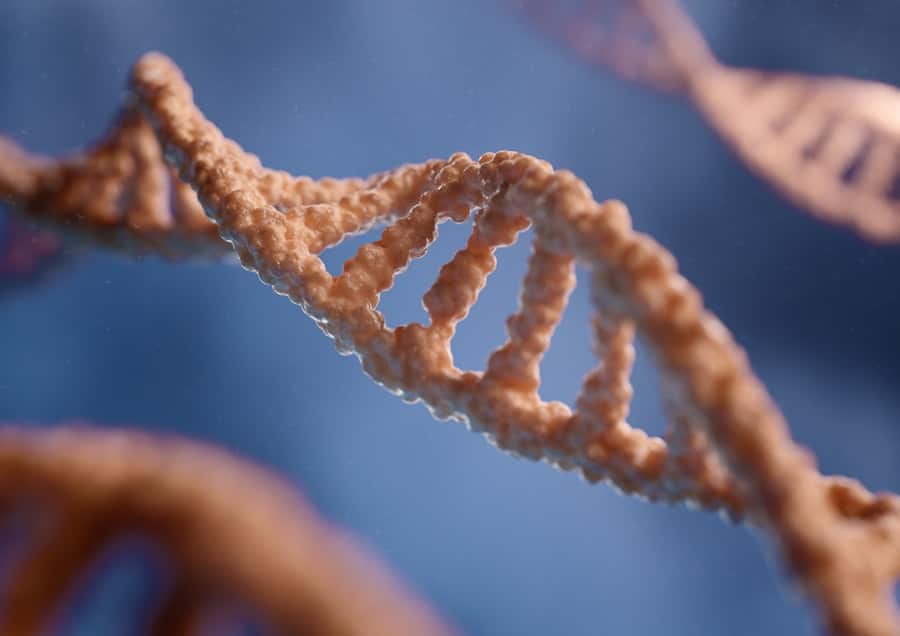CRISPR technology, an acronym for Clustered Regularly Interspaced Short Palindromic Repeats, has revolutionized the field of genetics since its discovery. Initially identified as a part of the immune system in bacteria, CRISPR allows for precise editing of DNA sequences, enabling scientists to add, remove, or alter genetic material with remarkable accuracy. The technology operates through a guide RNA that directs the Cas9 enzyme to a specific location in the genome, where it can create double-strand breaks.
This mechanism not only facilitates targeted gene editing but also opens up avenues for gene therapy, agricultural improvements, and even potential solutions to complex diseases. The implications of CRISPR technology extend far beyond basic research; it holds the promise of transforming medical treatments, particularly for rare diseases. Rare diseases, often defined as conditions affecting fewer than 200,000 individuals in the United States, encompass a vast array of genetic disorders that have historically been neglected due to their low prevalence.
With CRISPR’s ability to target and modify specific genes responsible for these conditions, researchers are now exploring innovative therapeutic strategies that could alleviate or even cure these debilitating diseases. The intersection of CRISPR technology and rare disease treatment represents a significant frontier in modern medicine, one that could redefine our approach to genetic disorders.
Key Takeaways
- CRISPR technology is a revolutionary gene-editing tool that allows for precise modification of DNA.
- Rare diseases are often genetic in nature and affect a small percentage of the population, making them difficult to treat.
- CRISPR has the potential to target and correct genetic mutations responsible for rare diseases, offering new hope for patients.
- Successful case studies have demonstrated the effectiveness of CRISPR in treating rare diseases such as sickle cell anemia and cystic fibrosis.
- Ethical considerations and regulatory challenges must be carefully addressed to ensure the safe and responsible use of CRISPR technology in rare disease treatments.
Understanding Rare Diseases
Rare diseases are a diverse group of conditions that often pose significant challenges for diagnosis and treatment. These diseases can be caused by genetic mutations, infections, environmental factors, or a combination of these elements. The rarity of these conditions means that they often receive limited attention from pharmaceutical companies and researchers, leading to a lack of effective treatments.
According to the National Institutes of Health (NIH), there are approximately 7,000 known rare diseases, affecting an estimated 25 to 30 million Americans. This statistic underscores the urgent need for innovative therapeutic approaches. Many rare diseases are genetic in nature, resulting from mutations in single genes or chromosomal abnormalities.
The complexity of these genetic disorders often leads to a wide range of symptoms and varying degrees of severity among affected individuals. Furthermore, the rarity of these diseases can complicate research efforts, as patient populations are often too small to conduct large-scale clinical trials.
This has created a significant gap in treatment options for patients suffering from rare diseases, making the potential applications of CRISPR technology all the more critical.
CRISPR Applications in Rare Disease Treatments

The application of CRISPR technology in treating rare diseases is both promising and multifaceted. One of the most compelling uses of CRISPR is its potential to correct genetic mutations at their source. By precisely targeting the faulty gene responsible for a particular condition, researchers can theoretically restore normal function and alleviate symptoms.
For example, in conditions like sickle cell disease and beta-thalassemia, where mutations affect hemoglobin production, CRISPR can be employed to edit the genes involved in hemoglobin synthesis. This approach not only addresses the underlying cause but also offers a long-term solution rather than merely managing symptoms. Moreover, CRISPR’s versatility allows for various strategies beyond simple gene editing.
Researchers are exploring its use in gene activation and repression, which can be particularly beneficial for conditions where gene expression levels are disrupted rather than outright mutations. For instance, in certain rare neurodegenerative diseases, enhancing the expression of protective genes could provide therapeutic benefits. Additionally, CRISPR can be utilized in developing gene therapies that involve inserting healthy copies of genes into patients’ cells.
This multifaceted approach positions CRISPR as a powerful tool in the fight against rare diseases, offering hope where traditional therapies have fallen short.
Case Studies of Successful CRISPR Treatments for Rare Diseases
Several case studies illustrate the transformative potential of CRISPR technology in treating rare diseases. One notable example is the use of CRISPR to treat sickle cell disease and beta-thalassemia. In clinical trials conducted by Vertex Pharmaceuticals and CRISPR Therapeutics, researchers utilized CRISPR-Cas9 to edit hematopoietic stem cells from patients’ bone marrow.
By targeting the BCL11A gene, which represses fetal hemoglobin production, they were able to reactivate fetal hemoglobin synthesis in patients’ red blood cells. The results were promising; patients experienced significant reductions in disease symptoms and improved quality of life after receiving their edited cells. Another compelling case involves Leber congenital amaurosis (LCA), a rare genetic disorder that leads to blindness due to mutations in specific genes responsible for retinal function.
In a groundbreaking study published in 2020, researchers used CRISPR to directly edit the genome of retinal cells in animal models. The study demonstrated that targeted editing could restore vision by correcting the underlying genetic defect. Following this success in animal models, clinical trials are now underway to assess the safety and efficacy of this approach in human patients suffering from LCA.
Ethical Considerations and Challenges of CRISPR Technology in Rare Disease Treatments
While the potential benefits of CRISPR technology are immense, ethical considerations surrounding its use cannot be overlooked. One primary concern is the possibility of off-target effects—unintended edits to other parts of the genome that could lead to unforeseen consequences. This risk is particularly concerning when considering germline editing, where changes would be heritable and passed on to future generations.
The ethical implications of altering human DNA raise profound questions about consent, especially when it comes to editing embryos or reproductive cells. Additionally, there are concerns regarding equitable access to CRISPR-based therapies. Given the high costs associated with developing and administering gene therapies, there is a risk that only affluent patients or those in developed countries will benefit from these advancements.
This disparity could exacerbate existing inequalities in healthcare access and outcomes. Furthermore, as CRISPR technology continues to evolve rapidly, regulatory frameworks must keep pace to ensure safety and efficacy while fostering innovation. Striking a balance between encouraging scientific progress and protecting public health is a complex challenge that requires ongoing dialogue among scientists, ethicists, policymakers, and society at large.
Future Potential of CRISPR in Rare Disease Treatments

The future potential of CRISPR technology in treating rare diseases is vast and largely untapped. As research progresses and our understanding of genetics deepens, new applications for CRISPR are likely to emerge. One area ripe for exploration is the development of combination therapies that integrate CRISPR with other treatment modalities such as small molecules or biologics.
This synergistic approach could enhance therapeutic efficacy and address multiple pathways involved in complex diseases. Moreover, advancements in delivery methods for CRISPR components will play a crucial role in expanding its applications. Current delivery systems often face challenges related to efficiency and specificity; however, innovations such as nanoparticles or viral vectors may improve the precision with which CRISPR can be delivered to target tissues.
As these technologies evolve, they will enable more widespread use of CRISPR-based therapies across various rare diseases.
Regulatory Landscape and Approval Process for CRISPR Treatments
The regulatory landscape surrounding CRISPR treatments is still developing as governments and health authorities grapple with how best to oversee this groundbreaking technology.
The approval process typically involves several phases of clinical trials designed to assess safety and efficacy.
For CRISPR-based therapies targeting rare diseases, this process can be particularly challenging due to the small patient populations available for study. In addition to safety concerns, regulatory bodies must also consider ethical implications when evaluating gene-editing technologies. The FDA has established guidelines for gene therapy products but continues to refine its approach as new data emerges from ongoing research.
Internationally, regulatory frameworks vary significantly; some countries have embraced more permissive policies regarding gene editing, while others maintain strict prohibitions on germline modifications. As global collaboration increases in genetic research and therapy development, harmonizing regulatory standards will be essential for ensuring patient safety while fostering innovation.
The Impact of CRISPR Technology on Rare Disease Treatments
The impact of CRISPR technology on rare disease treatments is profound and far-reaching. By enabling precise genetic modifications at unprecedented levels of accuracy, CRISPR has opened new avenues for addressing conditions that have long been neglected by traditional medicine. As researchers continue to explore its applications and refine its methodologies, we stand on the brink of a new era in healthcare where previously untreatable genetic disorders may become manageable or even curable.
While challenges remain—ranging from ethical considerations to regulatory hurdles—the potential benefits of CRISPR technology cannot be overstated. As we move forward into this exciting frontier of genetic medicine, it is imperative that we engage in thoughtful discussions about its implications while remaining committed to advancing science for the betterment of all patients affected by rare diseases. The journey ahead promises not only breakthroughs in treatment but also a deeper understanding of our genetic makeup and its role in health and disease.
A related article to “How CRISPR Technology Is Shaping Rare Disease Treatments” is the one discussing the recent sale of a Cryptopunks NFT bundle for $17 million in a Christie’s auction. This article explores the growing popularity and value of NFTs in the digital art world, showcasing how technology is revolutionizing the way we buy and sell unique assets. To read more about this fascinating topic, check out the article here.
FAQs
What is CRISPR technology?
CRISPR (Clustered Regularly Interspaced Short Palindromic Repeats) technology is a revolutionary gene-editing tool that allows scientists to make precise changes to an organism’s DNA.
How is CRISPR technology shaping rare disease treatments?
CRISPR technology is being used to develop potential treatments for rare genetic diseases by targeting and correcting the underlying genetic mutations that cause these conditions.
What are some examples of rare diseases being targeted by CRISPR technology?
Some examples of rare diseases being targeted by CRISPR technology include sickle cell anemia, Duchenne muscular dystrophy, cystic fibrosis, and Huntington’s disease.
What are the potential benefits of using CRISPR technology for rare disease treatments?
The potential benefits of using CRISPR technology for rare disease treatments include the ability to directly target the genetic cause of the disease, potentially providing more effective and personalized treatments for patients.
What are the challenges and ethical considerations associated with using CRISPR technology for rare disease treatments?
Challenges and ethical considerations associated with using CRISPR technology for rare disease treatments include off-target effects, the potential for unintended consequences, and the need for careful regulation and oversight to ensure the responsible use of this powerful technology.

